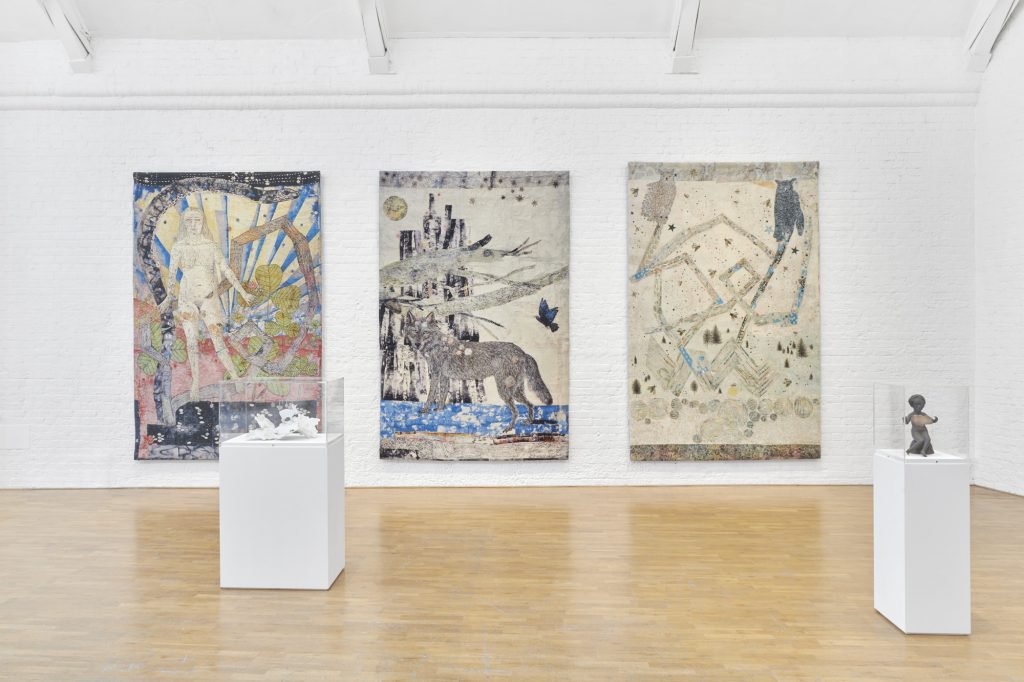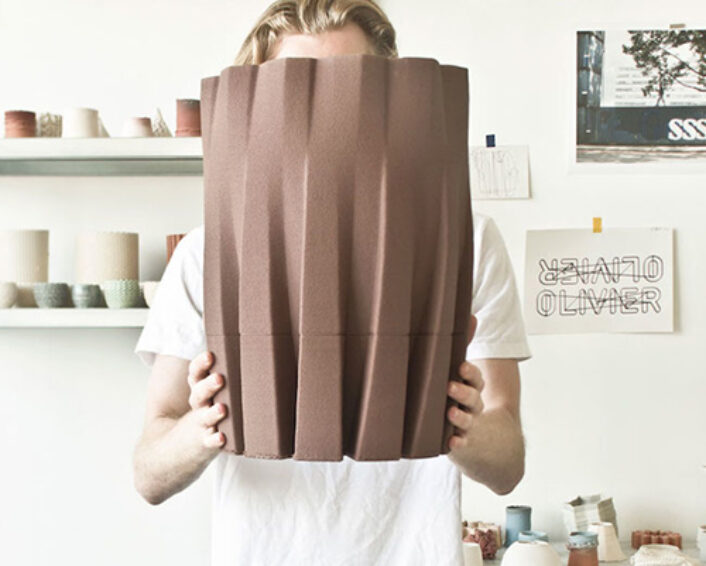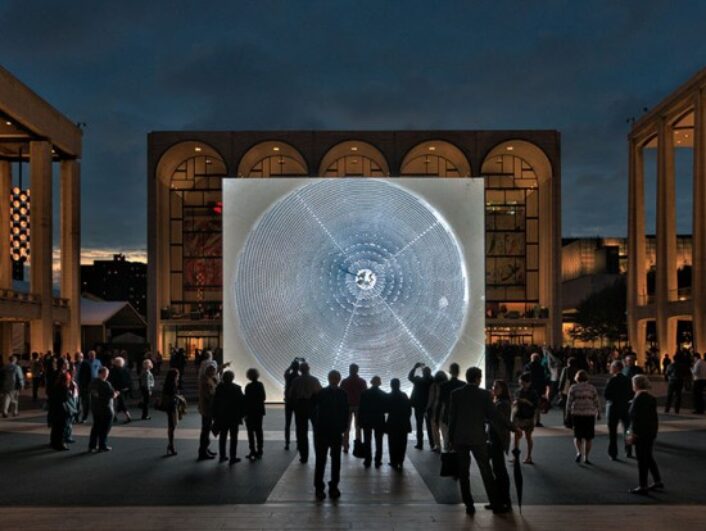“Silkworm Pavilion II”.
Culture
Neri Oxman and MIT’s Media Lab
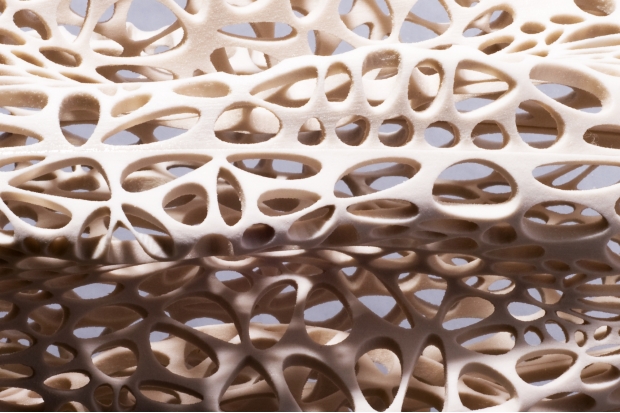
“Monocoque 2”, 2007. Acrylic Composites at MOMA.
In French “monocoque” means “single shell”, and Monocoque stands for a construction technique that supports the structural load using an object’s external skin.
Image courtesy of: Neri Oxman
Neri Oxman is fascinating; the American-Israeli designer is a professor at the MIT Media Lab. It is at MIT where she leads the Mediated Matter research group whose goal is to augment the relationship between “built, natural, and biological environments by employing design principles inspired and engineered by Nature, and implementing them in the invention of novel design technologies.”
Areas of application include architectural design, product design, fashion design, and also the design of new technologies for digital fabrication and construction.
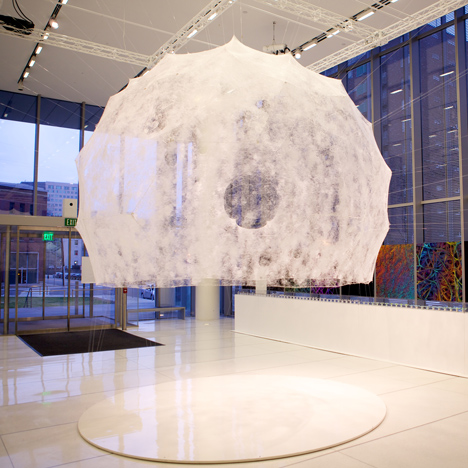
“Silk Pavilion” at MOMA.
Image courtesy of: Dezeen
Oxman coined the term of and pioneered the field of “Material Ecology”. This field is comprised of computation, fabrication, and viewing the material itself as inseparable dimensions of design. Through this approach, products and buildings are biologically informed and digitally engineered FOR and WITH nature.
Many of Oxman’s projects use 3-D printing and fabrication techniques. One of these installation was “Silk Pavilion”, the piece was spun when silkworms were released onto a nylon frame. A dome from silk fibers woven by a robotic arm was created and completed by live silkworms. The fascinating project explores how digital and biological fabrication techniques can be combined in order to produce architectural structures.
The project began with a robotic arm programmed to imitate the way a silkworm deposits silk when building its cocoon. The arm then deposited a kilometer-long silk fiber across flat polygonal metal frames to create 26 separate panels. The panels were arranged to form a dome that was suspended from the ceiling.
6,500 live silkworms were placed on the structure. As the caterpillars crawled over the dome, they deposited silk fibers and completed the structure. Oxman’s team attached minuscule magnets to the silkworms’ heads so that their movements could be traced. The data collected was used to help program the robotic arm to deposit silk on the metal frames.
Oxman said “We’ve managed to motion-track the silkworm’s movement as it is building its cocoon,” said Oxman. “Our aim was to translate the motion-capture data into a 3D printer connected to a robotic arm in order to study the biological structure in larger scales.”
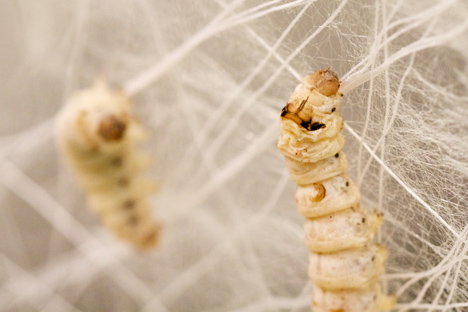
The silkworms at “Silk Pavilion II.”
Oxman shows that the idea of building is an amalgamation of systems that interact with each other. In other words, she demonstrates that elements are never isolated from one another.
Image courtesy of: Dezeen
Earlier this year, MOMA put on a sole exhibition that showcased seven of Oxman’s most important projects. The applications were part of “Neri Oxman: Material Ecology”… a materials library for tomorrow and a way to propose a new age where biology, design, and architecture are seamlessly interwoven.
The centerpiece, undoubtedly, is “Silk Pavilion II”, an installation that uses a swarm of 17,000 silkworms to generate 3-D cocoons from a single thread. Here, nature is both architect and co-designer while it creates the geometry of a geodesic dome.
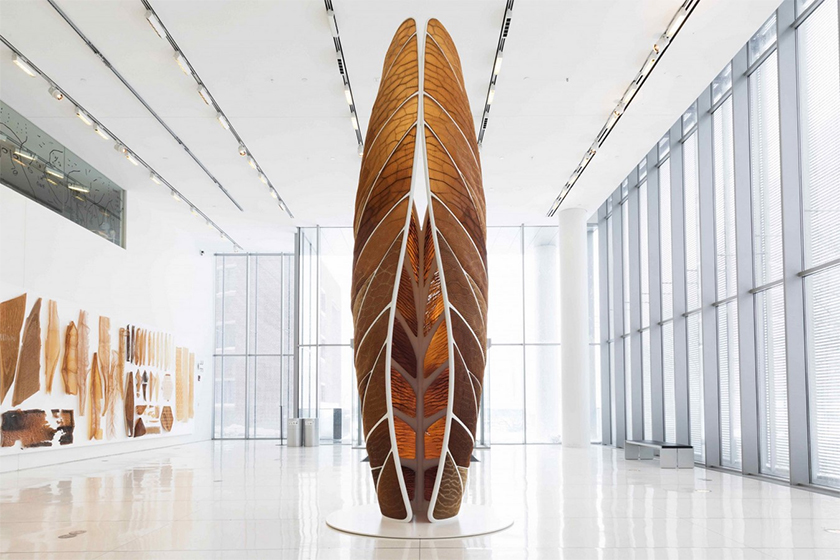
“Aguahoja”
This project is crafted from a service of 3-D printed membranes. The piece was developed to show the inefficiency of materials usage. When materials are extracted and appropriated far away from their native location, the exploitation rate is high.
Image courtesy of: Rethinking The Future
Part of Oxman’s mission is to bring awareness to climate change. She believes that interdisciplinary working is the most effective way to address today’s environmental challenges.
Oxman said, “Our biosphere is tightly intertwined. Services like air purification, climate regulation, carbon sequestration, and waste decomposition should all be part of architectural briefs. Our quality of life is inextricably linked to the health of the environment. We need to sustain our climate and augment it with designs that facilitate the well-being of not one but all species. Given the urgency of climate change, architecture needs to serve nature at large while considering these ecological forces as clientele. Architecture is evolving into the design of ecological niches. Also, architects are currently prioritizing shape instead of materiality. This modernist separation of form, structure, and material- and the more recent tripartite division of modeling, analyzing, and fabrication- has resulted in a predominance of geometry-first form generation.”
